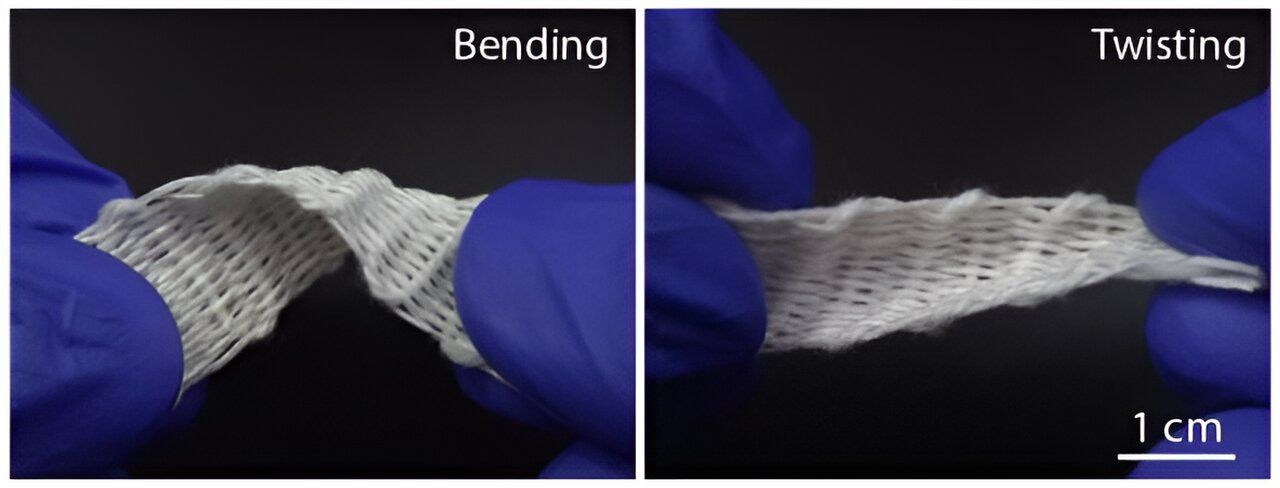A team of chemical engineers and materials scientists at Zhejiang University in China has developed a new type of aerogel fiber that has proven to be warmer than down when woven into a sweater. In their paper published in the journal Science, the group describes the inspiration for their fibers, how they were made and how well they worked when tested in a cold environment. Zhizhi Sheng and Xuetong Zhang, with the Chinese Academy of Sciences, have published a Perspective piece in the same journal issue outlining the work done by the team on this new effort.
The work by the researchers began as an effort to mimic the thermal properties of polar bear fur. They note that the reason the bears can keep warm in such cold temperatures is that the hairs that make up their fur coat have both a porous core and a dense shell. To recreate such attributes, the group created what they describe as an encapsulated aerogel fiber by starting with a precursor, which they spun as it was frozen. This process led to a sol-gel transition. The material was then freeze-dried and coated with a semi-hard shell.
The result was a thin round fiber that could be produced in desired lengths. The researchers note that no post-processing was needed to produce textiles, suggesting their fibers could be produced more cheaply than those currently in use.
The research team next produced batches of their fibers in long strands that they used to weave a sweater. They then tested the warmth of the sweater by exposing it to temperatures as low as −20°C. They claim the sweater demonstrated thermal protection that was better than similar sweaters made of down, wool, or cotton. They also stretched the sweater 10,000 times and found it suffered little damage. They also note that the fiber can be stretched, dyed, and flexed.
© 2023 Science X Network
2023-12-25 09:00:05
Link from phys.org rnrn
